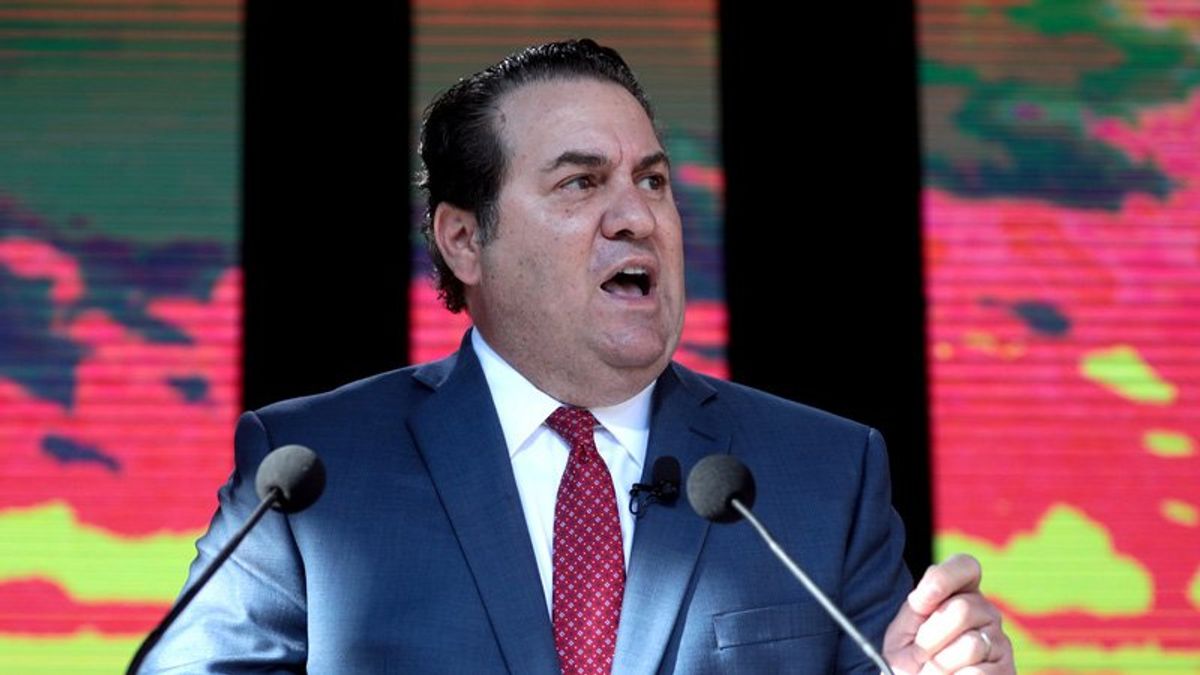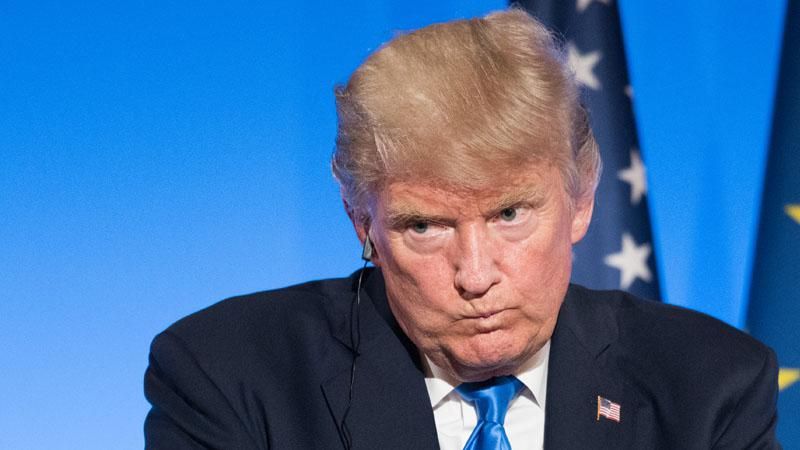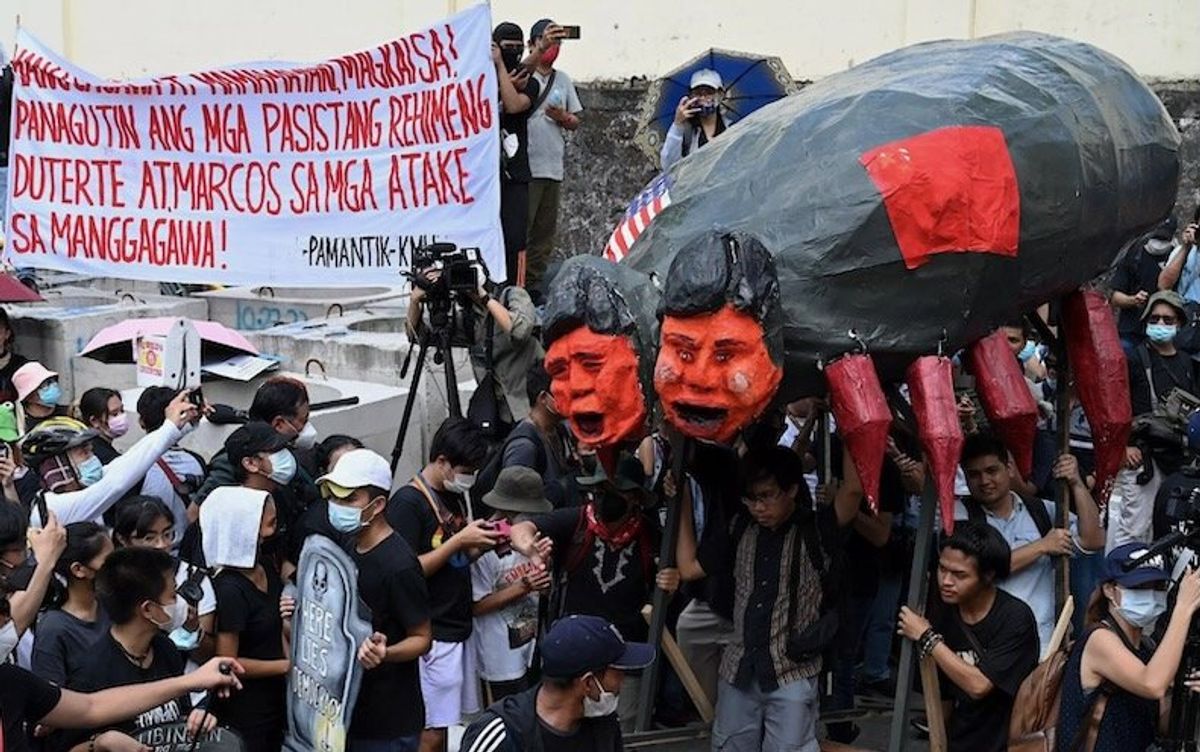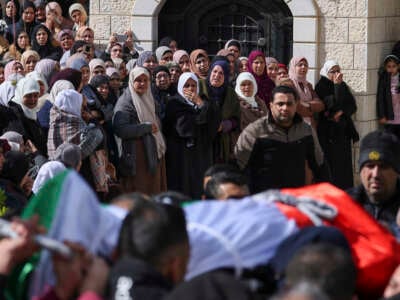The Washington Post even called Trump “the last president of the Confederacy.”
On a cold, windy day in January 2016, Donald Trump spoke in a gym on the campus of the University of Northern Iowa, where I teach. I participated in a small protest against the candidate. We carried signs, with the slogan “bigots can’t be president” emblazoned on many of them. How little we knew.
Donald Trump became president not in spite of his bigotry, but because of it. Fifty years earlier George Wallace and Richard Nixon perfected the “dog whistle,” making appeals such as “law and order” that implicitly appealed to white anxiety among “blue-collar” workers while remaining unheard to those in country clubs and suburbs. But this was different: Trump’s overt racism differentiated him from other candidates. He openly attacked oppressed groups—especially Muslims, Hispanics, and women. Conventional wisdom suggested that these kinds of explicit appeals would be political suicide, because it alienated white suburban voters. Instead, open racism, for example equating Mexicans and rapists, gave him an authenticity that his followers embraced and still cherish.
On January 6, 2021, Trump led a rebellion against the results of the election. His actions were phenomenally dangerous. The House committee that investigated January 6 referred his case to the Justice Department for prosecution. In the view of the committee, the former president was implicated in four offenses: obstructing an official proceeding, making false statements, defrauding the United States, and, most important, “inciting an insurrection.”
It has been two years since the events of January 6, 2021, without much action against Trump. Now Trump has announced he will again run for the presidency. Things have gone far enough that the television networks are negotiating the format of the 2024 presidential debates with the GOP. Other Republicans, such as Ron DeSantis, seem likely to declare their candidacy. But if this moment passes without any consequences for Trump and his co-conspirators, we run the risk of signaling that the peaceful transfer of power is optional. Worse, a more competent president could succeed in holding the reins of power after losing an election.
At first glance, Trump seems completely unique. No one else has dared to overthrow an election and seize ruling power. No one except Jefferson Davis, who tried to use violence to overturn the election of Abraham Lincoln. Davis was not just the nineteenth century version of a crank on the internet. He had far more political experience than virtually anyone of his time. After leaving Mississippi, Davis excelled at everything he tried. His academic record included West Point, one of the most rigorous schools in the country. He fought in the Mexican war, became Secretary of War under Franklin Pierce, and then served as a US Senator from Mississippi. Davis claimed that he did not want to be the president of the Confederacy (he would have preferred to be a general). Never known as a great orator, Davis opened his presidency with an inaugural speech in Montgomery, Alabama. It led long-time secessionist William Lowndes Yancey to declare “the man and the hour have met.”
A rough equivalence between Trump and Davis might at first seem wrong-headed. Thirty years ago, following the lead of Eugene Genovese, many historians saw the South as distinctive, neo-feudal, and paternalistic. It was a society fundamentally different and apart from the capitalist industrial North. In recent years, though, historians have highlighted the links between enslavers and the broader American economy. The slave economy included major bankers who financed slavery through mortgages and marketed its products in Northern textile factories. The most recent major biographer of Davis, William Cooper, had no great infatuation with theoretical hair-splitting. After a deep dive in the archives, Cooper got it right when he called his book Jefferson Davis, American.
Throughout Trump’s presidency, journalists have compared Trump to Davis, most notably for his racism and lawlessness. The Washington Post even called Trump “the last president of the Confederacy.”
Lincoln was loath to acknowledge that Davis led a sovereign country, and some historians have followed suit. Yet surely Davis did just that. Several events show the Union was forced to acknowledge the sovereignty of the Confederacy on a de facto basis. First, the Union and the Confederacy exchanged prisoners of war until 1863. Captured service members would pledge to return to the war only after being traded for a prisoner from the other side. The system broke down in 1863, but only after two years of tacit agreement. In the case of the steamer the Trent in 1861, the Union captured a British ship carrying two Confederate envoys. Under pressure from the British, Lincoln released the ship and its passengers, accepting Confederate nationalism in practice, if not in theory.
Andrew Johnson was not right about much, but when he said that “treason must be made odious and traitors must be punished” he spoke the truth. Secession, Lincoln had said, was the “essence of anarchy.” Call it anarchy, lawlessness, or disorder, it led to a war killing over 700,000. By allowing such a catastrophe to go unpunished, the country risked a repeat of rebellion.
After the war, Davis faced little punishment, given the scale of his crimes. In 1865 his confinement began in Fortress Monroe in Virginia. In response, his wife Varina Howell Davis became the center of a letter-writing campaign on his behalf. Gradually, his conditions improved: he was unshackled almost immediately, allowed to have tobacco, and visits from his wife. While many in the North wanted to see him hanged, many white southerners saw him as a martyr.
In May 1867 he was released on $100,000 bail, half of which came from two men, the railroad magnate Cornelius Vanderbilt and newspaper publisher Horace Greeley. The impeachment trial of Andrew Johnson slowed down a trial on Davis’s treason charges. Apparently the country was incapable of conducting two important proceedings at one time, perhaps because much of the northern public believed, falsely, that one or both men had a role in the conspiracy behind the assassination of Abraham Lincoln. Johnson’s impeachment trial closed in May 1868. Later that year, Johnson pardoned Davis in time for Christmas.
Politicians of both parties in the North hoped that kind treatment of Davis, and by extension all Confederate leadership, would wrap up the disastrous Civil War. It is true that Davis stayed out of politics. In fact, after the passage of the 14th amendment, he was constitutionally barred from holding office. He tried to make a living in the insurance industry, but was only moderately successful. He then settled down on the Gulf Coast at Beauvoir, the home of the writer Sarah Dorsey. Davis’s wife, Varina, travelling in Europe, was initially unhappy about it. She became reconciled to the arrangement, since she did not have much choice.
At Beauvoir, Davis had the peace and quiet to write his memoirs, a massive two-volume tome devoted in large part to arguing the constitutionality of secession. I attempted to read the memoirs as a graduate student. There must be a more boring book written in the English language, but if there is, I have never found it.
Davis was not especially popular as a politician, but especially after his death in 1889, he excelled as a martyr. The Lost Cause movement flourished during the twenty-five years after the war, and peaked in the 1890s, just after his death. While the statue of him in Richmond has been torn down, his likeness is still carved into prominent places such as Stone Mountain in Georgia.
It is impossible to know exactly what would have happened if Davis remained confined in Fortress Monroe or been hanged for treason. Hundreds of thousands Union soldiers died in the war, and not a one gave their lives to protect Davis’s right to sell insurance. The mild treatment of Davis was mirrored by the oppression of people who had been enslaved.
Karl Marx said that history repeats itself, the first time as tragedy and the second time as farce. In 2015, Donald Trump seemed to be a farce. Again, in 2023, he has been dismissed again, not due to low poll numbers, but the power of magical thinking. He has been called the “prisoner of Mar-a-Lago,” because he rarely leaves his golf course development. But with help from Elon Musk, he has returned to Twitter and Facebook. He worked the phone during the interminable vote on making Kevin McCarthy speaker of the House. Trump remains the most powerful man in the Republican Party.
I won’t forget our tiny demonstration in the Iowa cold. Trump has been underrated before, and contrary to the signs we carried, bigots can be president. But if the Justice Department fails to act on his “incitement to insurrection,” it will do so not because the former president is innocent, but because Trump still has so many, and such unsavory, followers. If Justice fails to pursue his case, it will not prove his innocence, but just that Trump is too big to fail. Jefferson Davis deserved a fair trial, and so does Trump. The tragedy of Davis’s making, the Civil War, has ended. But Trump, who led his own tragedy, remains alive and well. It will take both political and legal effort to build a new national norm: that insurrectionists can’t be president.
Wallace Hettle is a Professor of History at the University of Northern Iowa.











